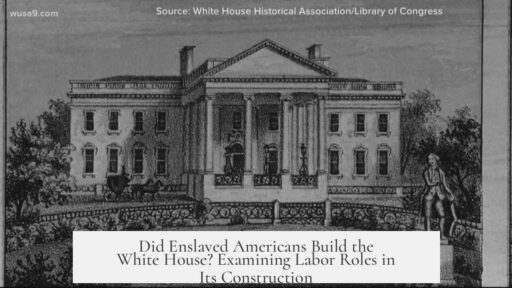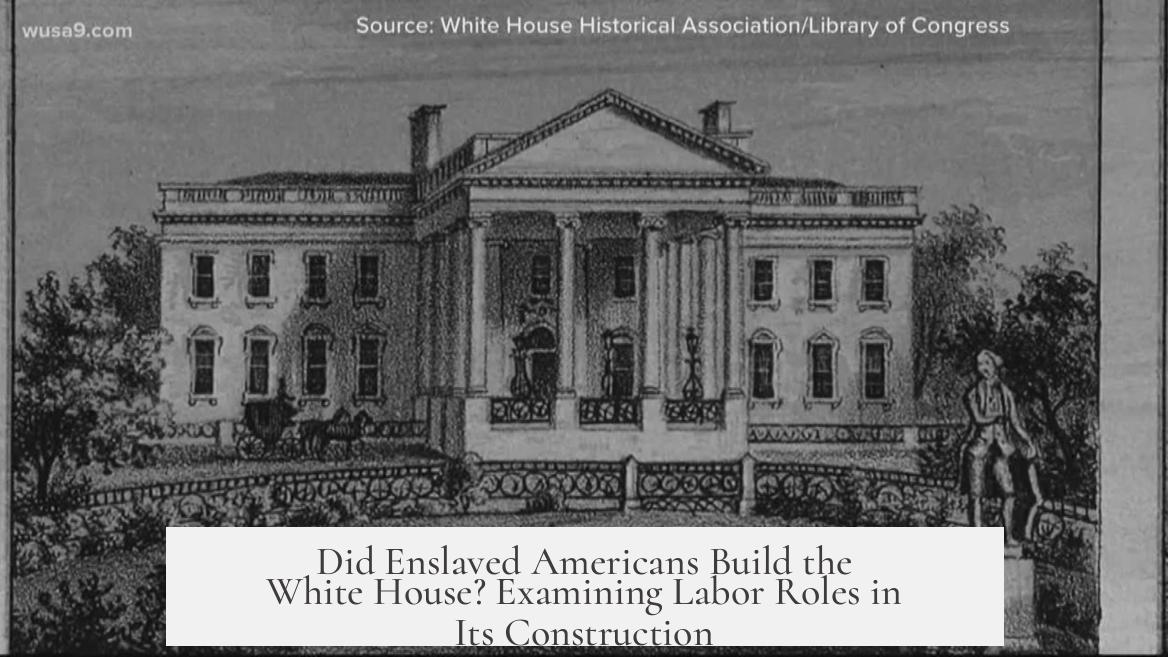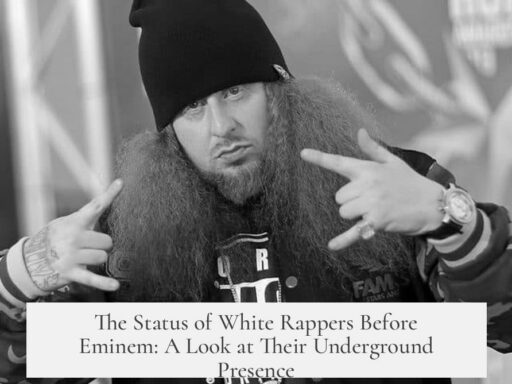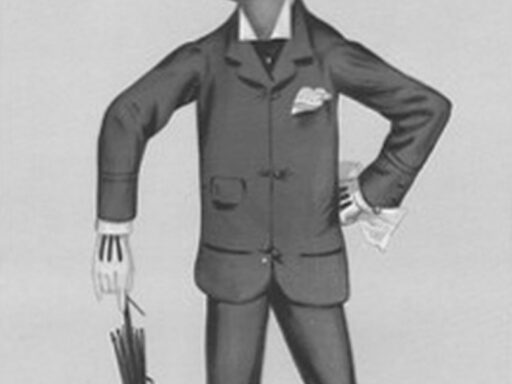Yes, enslaved people played a significant role in building the White House, but they were not the sole labor force. The construction involved a diverse group of workers, including enslaved Americans, free Black workers, white laborers, and European artisans.
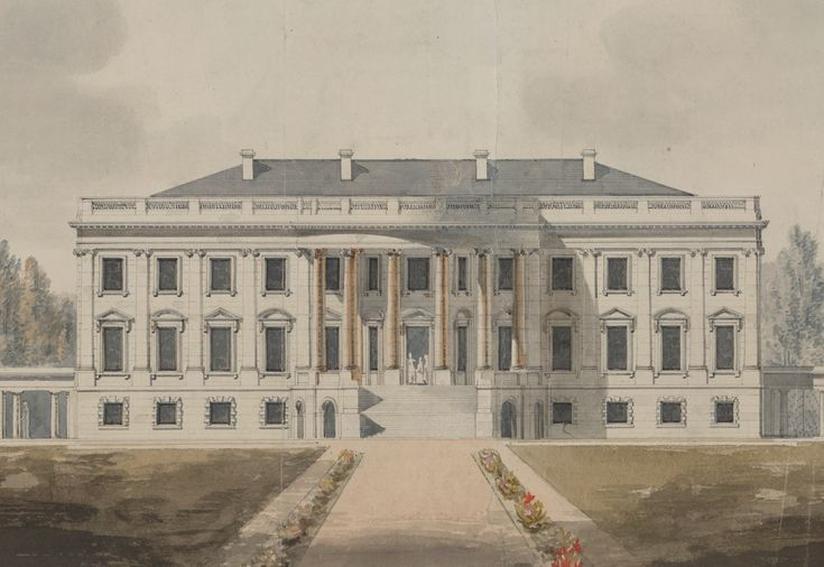
The history of the White House’s construction dates to the late 18th century, beginning around 1792. Enslaved people from Maryland and Virginia were leased by the U.S. government from private owners to clear land and perform skilled labor.
Records show 122 enslaved individuals, identified as “Negro hire” in wage rolls from 1795 to 1800, worked on the project. Enslaved workers undertook heavy land clearing tasks, removing forests and draining swampland around the site.
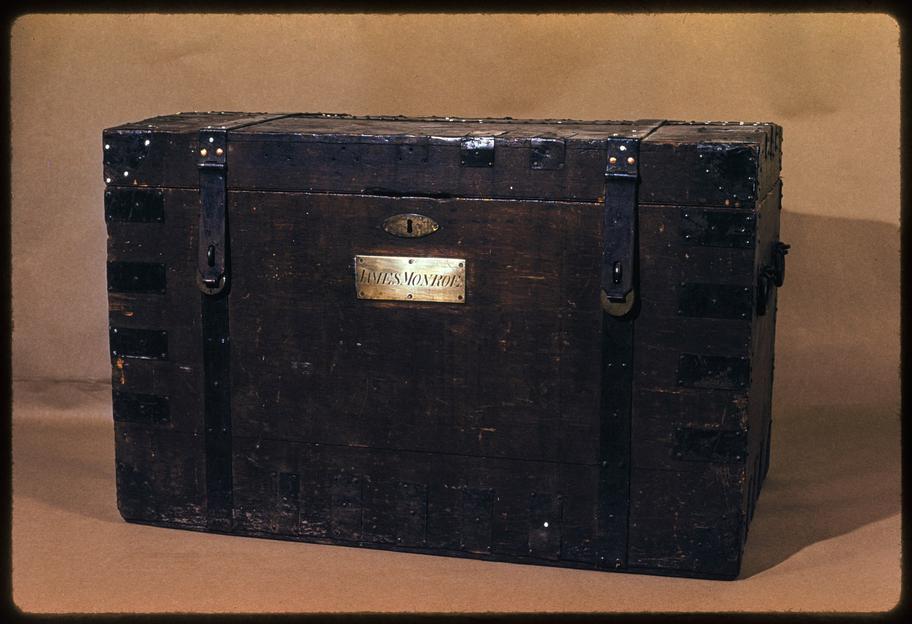
Beyond manual labor, many enslaved people were skilled craftsmen. For example, in the government quarry at Aquia, Virginia, stonemason Collen Williamson trained enslaved workers to quarry and cut stone. This stone was later shaped and fitted by Scottish masons to erect the White House walls.
Carpentry also involved enslaved labor. Documentation from 1795 lists four enslaved carpenters—Tom, Peter, Ben, and Harry—who contributed to building the residence. These examples highlight that enslaved people were integral at multiple construction stages, from foundational work to specialized trades.
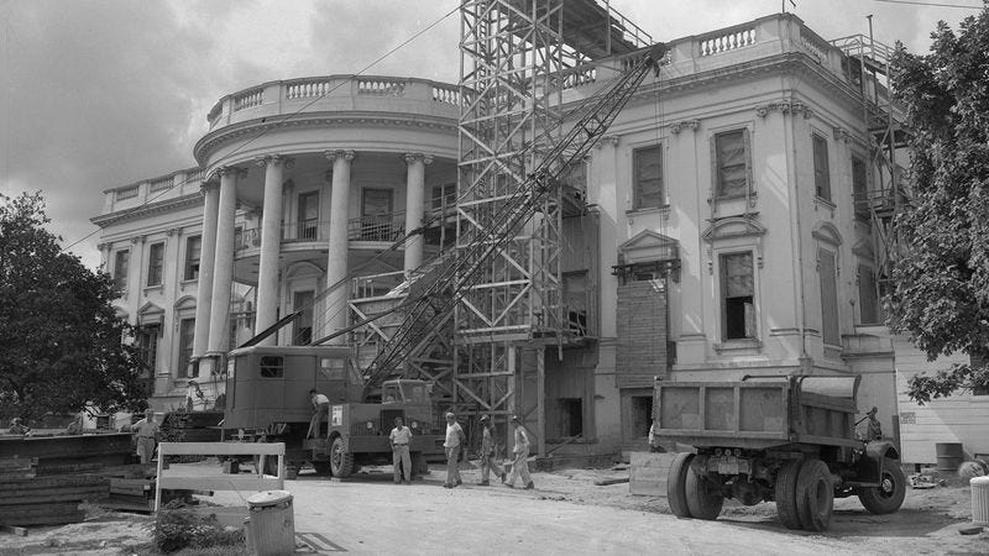
While enslaved labor was essential, the government also hired a range of other workers. The original architectural plans aimed to employ European laborers. Irish architect James Hoban designed the White House, inspired by a ducal palace in Ireland, the current seat of the Irish Parliament.
Scottish masons were brought in for their expertise in stonework. These European artisans handled detailed masonry techniques, ensuring the building’s durability. Additionally, the workforce included local white laborers, artisans from Maryland and Virginia, and immigrants from Ireland, Scotland, and other countries.
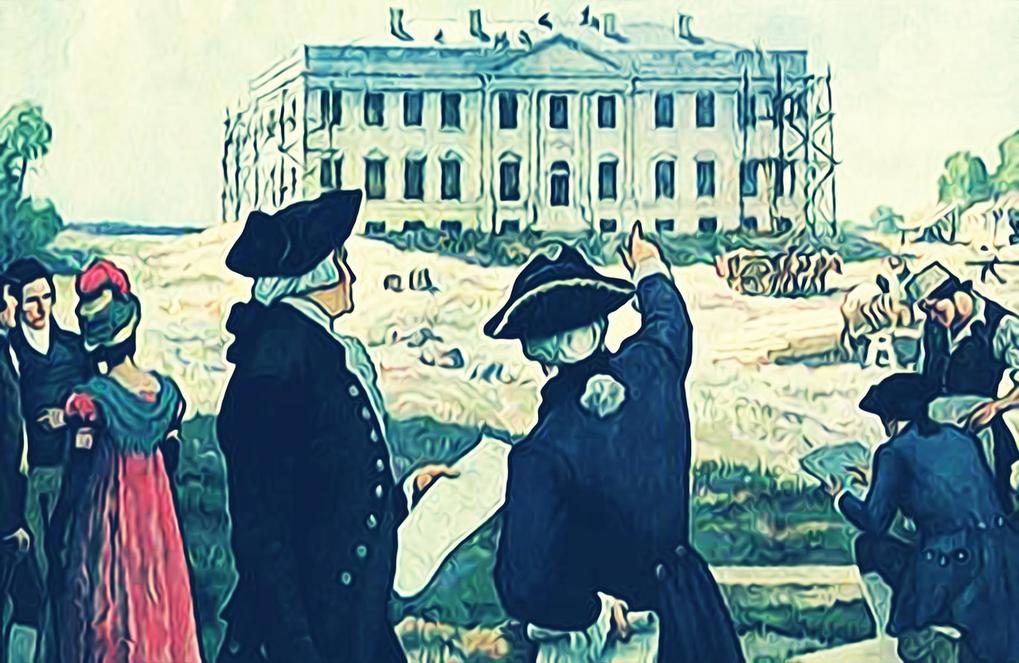
This diverse labor pool meant enslaved workers were part of a broader crew. They worked alongside free Black Americans and standard construction workers. Still, enslaved men and women constituted a vital labor segment, particularly in unskilled and semi-skilled roles.
The U.S. government itself did not directly own slaves used in construction. Instead, they hired enslaved individuals from private citizens. Few slaves were federally owned at the time, and those were not part of White House building crews. This hiring arrangement reflects the government’s reliance on slavery infrastructure in the Chesapeake region.
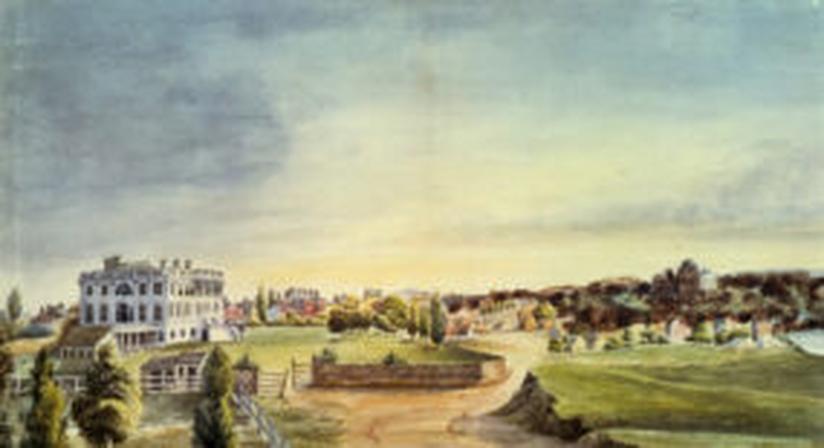
Historical journals record poignant details illustrating the connection of slavery to the White House. Notably, the second child born in the White House was the child of an enslaved woman owned by Thomas Jefferson, emphasizing slavery’s close presence even in the presidential residence.
The White House was damaged by British forces in 1814 during the War of 1812 and rebuilt thereafter. Enslaved labor again played a major role in the reconstruction, continuing the pattern of forced labor in important federal projects.
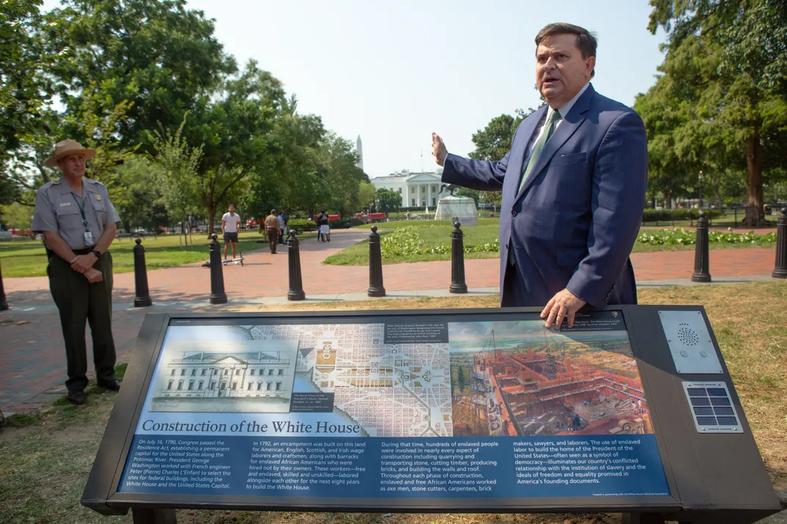
The contribution of enslaved people to the White House’s construction is part of a broader American story where slavery shaped monumental architecture and public works. Their involvement challenges simplified narratives and demands acknowledgment of this labor in U.S. history.
- Enslaved Americans significantly contributed to the White House construction, mainly through leased labor hired by the federal government.
- Skilled enslaved workers performed stone quarrying, cutting, and carpentry alongside European-trained masons and architects.
- Construction involved a mixed workforce of enslaved people, free Black Americans, white laborers, and immigrant artisans.
- The government did not own slaves directly for the project but hired enslaved labor from private owners.
- The White House’s design by Irish architect James Hoban brought specialized European influences, combined with local and enslaved labor.
Did slaves actually build the White House? If not who did?
Yes, enslaved Americans were deeply involved in building the White House, but they were not the only workers on site. The story is complex and revealing. It shows how a diverse group of laborers, including enslaved blacks, free black Americans, white laborers, and skilled European artisans, came together—willingly or not—to erect one of the most iconic buildings in the United States.
So, how deep was the involvement of enslaved people, and who else contributed? Let’s take a detailed look.
The Role of Enslaved Americans in Building the White House
The original White House, completed in 1800, and the reconstructed version after the British burned it down in 1814, were both largely built by enslaved Americans. This fact challenges the comforting notion that such a foundational American symbol was built only by free labor.
Historical journals show that Black slaves were not merely bystanders but were instrumental in building the President’s Mansion. Enslaved workers were leased from local owners in Maryland and Virginia, hired out by the government but still under private ownership. This leasing was common at the time; the Federal Government did not directly own slaves for this project.
Between 1795 and 1800, payroll lists included 122 names marked as “Negro hire,” 18th-century jargon for enslaved people who were rented out for their labor. Four enslaved carpenters—Tom, Peter, Ben, and Harry—played hands-on roles in woodworking tasks at the construction site, demonstrating skill often overlooked in popular narratives.
Enslaved workers didn’t just wield hammers and saws. Stonemason Collen Williamson trained enslaved men on-site at the government quarry in Aquia, Virginia. These individuals quarried and roughly shaped the sandstone, which Scottish masons then dressed and set into the walls. Their labor literally shaped the White House’s structure.
Moreover, dozens, perhaps hundreds, of enslaved laborers cleared forests and drained swampland around the construction area. These tasks would be grueling, unglamorous, yet essential for preparing the site.
Did you know? The second child born in the White House was actually to an enslaved woman owned by Thomas Jefferson.
Who Else Worked on the White House Construction?
Were slaves the only workers? Far from it. The government initially hoped to hire European laborers—Irish, Scottish, and other immigrants—to dig and build. When that proved difficult, enslaved labor was leased as a practical solution.
The workforce was diverse. Free Black Americans, local white laborers, and immigrants all played roles. Scottish masons contributed specialized stone-cutting techniques crucial for protecting the aquia sandstone from damage. It was not just any group nailing boards together—these craftsmen had advanced skills.
James Hoban, the Irish architect who designed the White House, based his work on a Ducal Palace in Ireland, which now houses the Irish Parliament. Hiring Scottish masons familiar with similar techniques aligned with Hoban’s architectural vision.
So, the White House is a patchwork of skilled and unskilled labor, enslaved and free individuals, immigrants, and Americans—an early example of America’s complex labor and social history.
The Government’s Role in Hiring Enslaved Labor
The federal government didn’t own slaves specifically for this project. Instead, it rented or “hired” enslaved workers from private citizens. This is a key point. The government’s involvement was indirect but systematic. It shows how slavery was woven into official state projects.
The idea of hiring enslaved people rather than free paid workers might seem shocking today, but at the time, it was a common practice in Maryland and Virginia, the heart of early U.S. political life.
The Bigger Picture and Why It Matters
Understanding that enslaved Americans built the White House isn’t just about historical trivia. It challenges us to rethink the stories we tell about the nation’s founding. The White House—symbol of freedom and democracy—rests on the backs of people who were denied both.
So, here’s a thought: How do monuments and buildings shape our understanding of history? When we learn the truth, it doesn’t diminish the White House’s significance but deepens our appreciation of all who contributed—willingly or unwillingly.
It’s also a lesson in the complexity of history. No one group built the White House alone. It was a collective effort involving enslaved laborers, free Americans, and skilled immigrants. A diverse workforce united under the pressure of early America’s demands.
Lessons and Reflections for Today
This story encourages us to acknowledge all contributors to major achievements, especially those whose work has been overlooked or erased. It reminds historians, educators, and citizens to tell fuller, more honest stories.
For anyone interested in American history, the White House’s construction is a perfect case study of how the nation’s ideals sometimes clashed with its practices. Slavery was part of the “foundation” of the country in more ways than metaphorical.
Now, when you look at the White House, you might wonder:
- Who built the places we consider sacred today?
- What voices are missing from our history books?
- How does recognizing all contributors change the way we think about America?
These questions don’t have easy answers but asking them is crucial.
In Conclusion
The White House was indeed built by enslaved Americans, among many other workers. Enslaved laborers cleared land, quarried stone, crafted wood, and contributed skills that made the iconic building possible. The government leased these enslaved people, while skilled European masons and various white and free black workers also played their roles.
Recognizing this complex reality doesn’t just correct history. It enriches it. The White House isn’t just a symbol of power—it’s a monument to the many hands that built America’s legacy, both free and unfree.
Did enslaved people actually build the White House?
Yes, enslaved African Americans played a significant role in building the original White House and the one rebuilt after 1814. They worked in quarrying stone, carpentry, and land clearing necessary for construction.
Who else worked on the White House besides enslaved people?
The workforce included free Black Americans, local white laborers, and European immigrants from Ireland, Scotland, and elsewhere. Specialized Scottish masons were key in handling the stonework.
Why were enslaved workers used instead of European laborers?
The original plan was to hire European workers, but those plans failed. To fill the labor shortage, the government leased enslaved workers from local owners in Maryland and Virginia.
Did the federal government own the enslaved workers who built the White House?
No. The government did not own these enslaved workers directly. It hired slaves who were owned by private citizens to help with the construction.
Who designed the White House and oversaw its construction?
The White House was designed by Irish architect James Hoban. Scottish masons and other skilled laborers worked under his direction along with enslaved and free workers.
